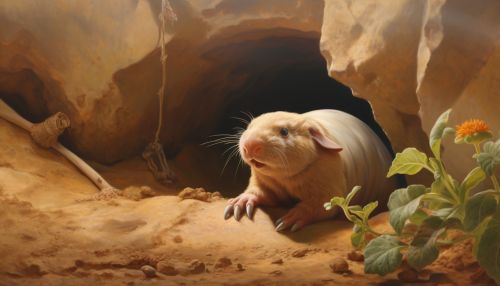Biological Mechanisms of Animal Adaptation to Subterranean Environments
Introduction
Subterranean environments are unique ecosystems that present a variety of challenges to the organisms that inhabit them. These environments are characterized by complete darkness, low temperatures, high humidity, and limited food resources. Despite these harsh conditions, a diverse array of animals have adapted to life underground. This article explores the biological mechanisms that enable animals to survive and thrive in subterranean environments.


Physical Adaptations
Morphological Changes
One of the most noticeable adaptations of subterranean animals is their morphological changes. These changes are primarily driven by the need to navigate and survive in the confined spaces of underground habitats. For example, many subterranean animals, such as the naked mole rat, have evolved a cylindrical body shape to facilitate efficient burrowing. Similarly, the limbs of these animals are often short and robust, with large, strong claws for digging.
Sensory Adaptations
In the absence of light, subterranean animals have developed enhanced non-visual senses. These include heightened tactile, auditory, and olfactory senses. For instance, the star-nosed mole possesses specialized sensory organs at the tip of its snout, which it uses to detect prey and navigate its environment. Similarly, many subterranean animals have a highly developed sense of smell to locate food and mates.
Physiological Adaptations
Metabolic Adjustments
Subterranean environments often have low oxygen levels and high levels of carbon dioxide. To survive in these conditions, subterranean animals have evolved various metabolic adjustments. For example, the blind mole rat has a low metabolic rate, which reduces its oxygen consumption and production of metabolic waste. Additionally, these animals have a high concentration of hemoglobin in their blood, which enhances their oxygen-carrying capacity.


Thermoregulation
Subterranean environments are characterized by stable, low temperatures. As such, animals living in these environments have developed mechanisms to regulate their body temperature. For instance, the European mole maintains a constant body temperature by generating heat through shivering and by having a high metabolic rate. Additionally, these animals have a thick fur coat that provides insulation against the cold.


Behavioral Adaptations
Subterranean animals have also evolved behavioral adaptations to cope with the challenges of their environment. These include specialized foraging strategies, such as the Eastern mole's technique of creating a network of tunnels to trap and capture prey. Additionally, many subterranean animals are solitary, which reduces competition for limited resources.


Conclusion
The adaptations of subterranean animals are a testament to the power of evolution to shape organisms in response to their environment. Through a combination of physical, physiological, and behavioral adaptations, these animals have managed to conquer one of the most inhospitable habitats on Earth.
